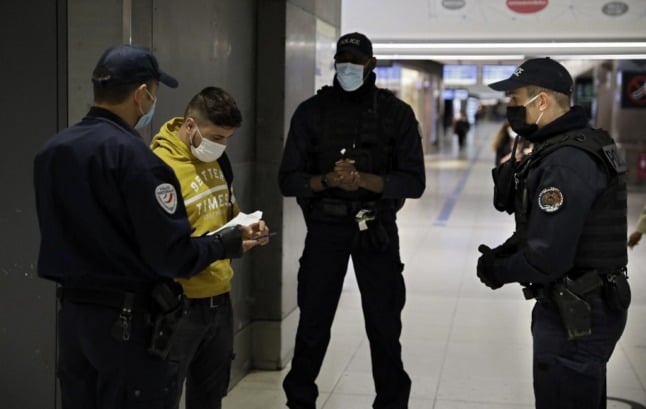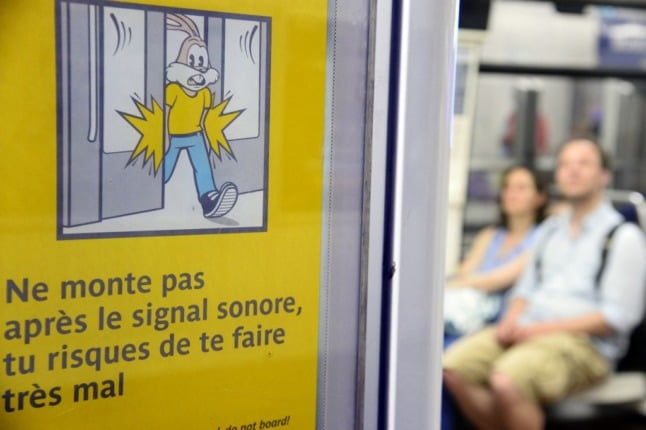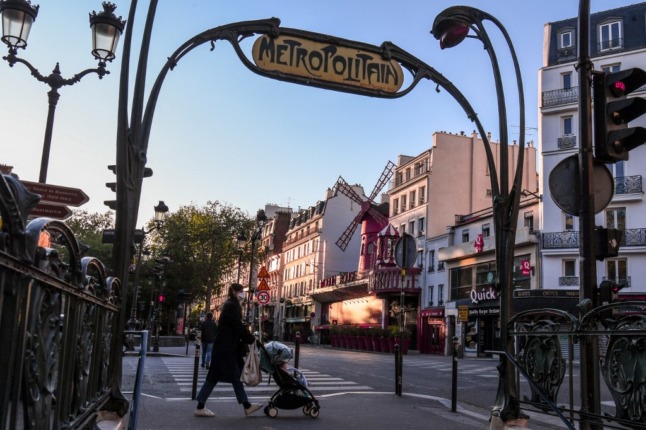While the Paris Metro map is pretty easy to follow, some of the rules of the system are not so obvious. Agents of operator RATP regularly patrol the network checking tickets and if you are caught in contravention of the rules no amount of crying, playing the dumb foreigner or offering to buy them a beer will spare you from a fine.
Here are the some of the things that regularly catch out newcomers and visitors to the city.
Paris airports are not in Paris
You might naturally assume that Paris Charles de Gaulle and Paris Orly airports are in Paris. But you would be wrong.
Technically both airports are in the greater Paris region of Île-de-France and if you’re travelling on the Metro or RER train network this is important, because it affects the kind of ticket you buy. A single ticket for the city, or an all-day pass for Paris, is not valid for a trip out to either airport.
While a city pass will allow you to enter the network inside Paris, it won’t be valid to exit at the airport and transport police frequently patrol there to catch out unwary tourists. Travelling without a ticket valid for your entire journey nets you a fine of €35 per passenger.
Instead you need to either buy a single ticket directly to the airport or a day pass for the whole Île-de-France region.
READ ALSO The strange rules of the Metro you should know about

Buying a ticket is not enough
But just buying your ticket is not enough, you also need to validate it.
Tickets can be bought either in paper form from machines in the station, or in digital format on passes such as the Navigo pass or phone apps such as ViaNavigo. However you buy your tickets, every time you enter the Metro, bus, tram or RER network you need to validate your ticket (in order to stop people using a single ticket for multiple journeys on multiple days).
For paper tickets this means passing it through the machines on entry, while passes and phones can be swiped.
If you see an open gateway next to a long queue for the turnstiles it can be tempting to just walk through, but this means that you are not in possession of a validated ticket for your journey, and if you are stopped you will be fined.
One of the very few exceptions to the ticket rule is for people who have no hands (either through amputation or medical condition) – provided they are not accompanied by a carer.
Getting lost is forbidden (sort of)
Some of the larger Metro stations like Bastille, Hôtel de Ville and (the daddy of them all) Châtelet can be confusing for newcomers, with their vast warren of tunnels. But as well as signs for the exit, keep a sharp eye out for one-way signs or arrows. Many of the tunnels have a designated direction and walking the other way is actually illegal.
Several tourists have fallen foul of this rule and been slapped with a fine by RATP agents, along with a pregnant French woman who was trying to take a short cut out of Bastille (those ticket agents really can be pitiless).
RATP says this is a safety issue and one-way systems ensure the flow of movement, and to be fair at rush hour you do need everyone to be moving in the same direction to avoid jams.
Follow the rabbit’s advice
Speaking of safety, once the train is about to leave the station a long beep indicates that the doors are about to close. Technically it is forbidden to enter the train once the beep starts, but this rule is widely ignored and many people seem to enjoy taking a balletic leap into the carriage at the last possible moment.
Once the doors actually begin to close, though, don’t be tempted to try and hold them open – the doors will carry on closing and will trap your hand/skirt/baby buggy.
That’s where a rabbit named Serge comes in.

The door of every Metro carriage has a warning sign in which a cartoon rabbit warns you either Ne monte pas après le signal sonore, tu risques de te faire très mal (Do not enter after the signal sounds, you risk being badly hurt) or, in older versions of the sign, Attention, ne mets pas tes mains sur la porte, tu risques de te faire pincer très fort (Beware, do not put your hands between the doors, you risk a very hard pinch).
Created more than 40 years ago, Serge le Lapin is now a design icon and even has his own Twitter account.
[#LeSaviezVous] Les stations de métros #RATP disposent de mâts différents, certains sont même uniques ! Généralisés sur l'ensemble du réseau, ils permettent de signaler de loin l'accès à une station. Saurez-vous deviner où ils se trouvent ? Les réponses seront données demain ⬇️ pic.twitter.com/7ohghlRz2u
— SergeleLapinRATP (@SergeLapinRATP) August 3, 2021
Keep a close eye on your pockets
And it’s not just the Metro police that you need to look out for – unfortunately some of your fellow passengers may be a problem.
While it is a relatively safe city, Paris does have a serious problem with pickpockets and they frequently congregate on Metro trains or in stations, so keep an eye on your pockets and bags. For women, sexual harassment and groping is unfortunately not an uncommon experience, particularly on packed trains.
READ ALSO 14 tips to avoid pickpockets and petty thieves
It’s not uncommon to also see beggars on public transport. They are very rarely aggressive and whether you give them money or not is entirely up to you.
Anyone playing music in Metro carriages or on the platform is an unlicensed busker, but the transport network does have a system of official buskers who play in the tunnels. They have to audition to get a spot and you can hear some really good music this way.
And keep it secular
Unfortunately it’s no use asking for divine guidance to help understand the system, praying is actually illegal on the public transport network.



 Please whitelist us to continue reading.
Please whitelist us to continue reading.
As a very frequent, yearly, tourist I find the Metro fantastic, and I have even figured out Chatelet! I have always felt safe. But yes there are rules. And if you follow them it can be an awful lot of fun to travel around Paris. My only advice is to be aware of your body, there are pick pockets. But the same can be said for any subway system. I do want to add many Thanks to the very nice citizens who have gladly answered my questions on how to get around. Parisians have a pride in their city, as they should. I understood from the very beginning that Parisians are very formal. Little chit chat. And they like to be introduced.
Another tip to add here is the undisclosed, unmarked via signage, etc is the 50 euro fine for putting your feet on another chair on a commuter train. I recently took one – never ride them – to visit Fountainbleau. I basically had a heatstroke after walking the ground on a hot August day and put my feet up on the opposite chair (I was alone; the train was empty) to try and elevate my feet. Slammed with a fine! There were symbol-based signs explaining what behaviors are not allowed on the train, but nothing mentioned this. I am fighting the fine via my credit card company because it seems really unjust to not warn people of this innocent action could cost you 50 euros! I’m a NY’er and the worst thing I can imagine is a conductor on the LIRR or Metro-North lines is to move your feet. Which thank you France, would have sufficed. It’s basically entrapment.
Er, putting your feet on a chair is not entrapment. It’s just a bad habit when you consider the germs on your shoes. Most public transport I have used across the globe bans this. It is also on warning signs on French trains. Most parents also tell their kids not to do it for the same reason!
Now, you can argue whether 50 Euros is a suitable fine for this behavior, but saying the train was empty does not justify the act. It almost sounds like you knew it was wrong but thought nobody would see you…
And, given the propensity of dog excrement on the streets, do you want to sit on the seat after someone has ‘put their feet up’?
The bus system is a few steps up in complexity to use, but well worth the effort to learn. Usually safer and cleaner, and give you a street level tourist experience. Can however be much slower to get around. It uses the same ticket / passes as the Metro. Over the years, I have gone from 100% Metro to about 50-50, and will always prefer the bus if possible.